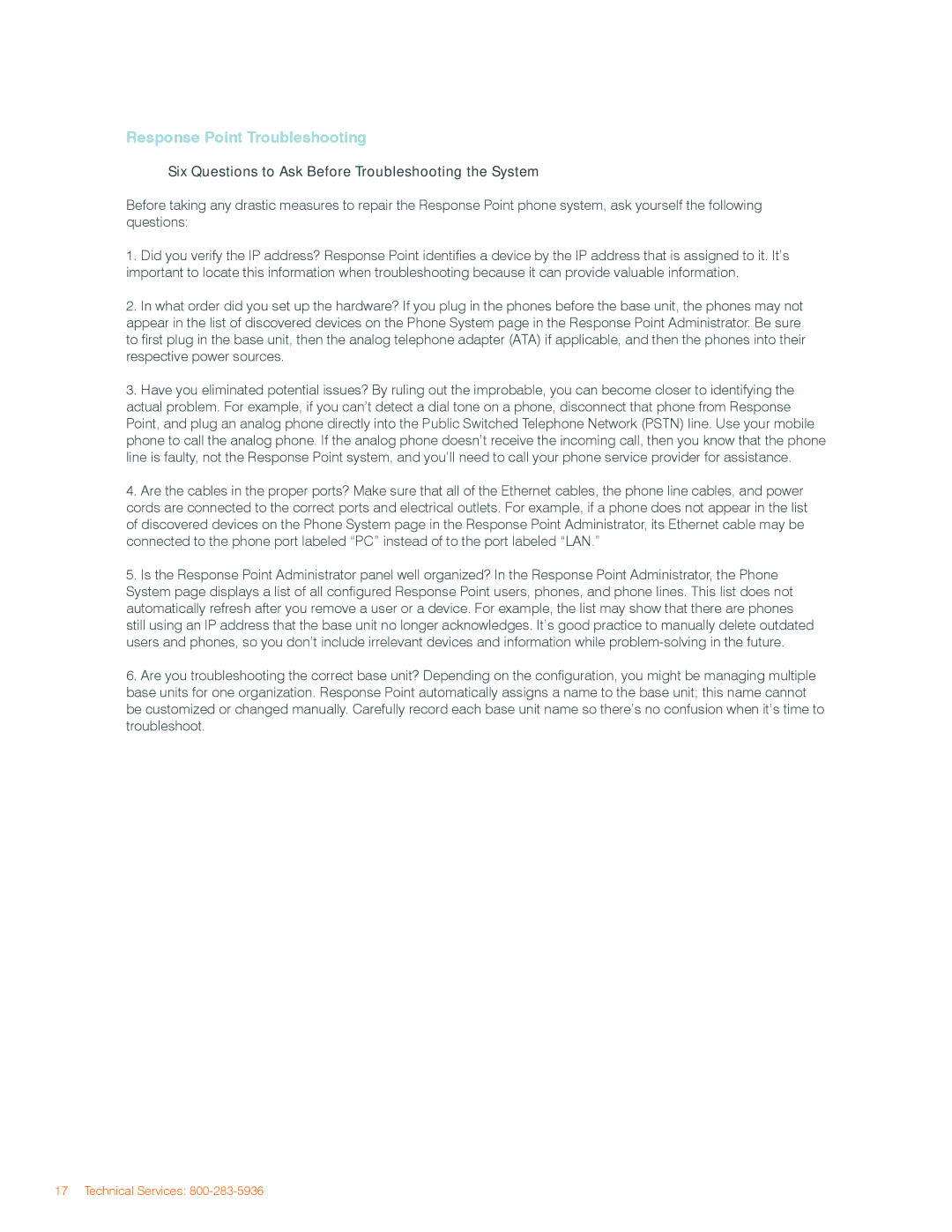Response Point Troubleshooting
Six Questions to Ask Before Troubleshooting the System
Before taking any drastic measures to repair the Response Point phone system, ask yourself the following questions:
1.Did you verify the IP address? Response Point identifies a device by the IP address that is assigned to it. It’s important to locate this information when troubleshooting because it can provide valuable information.
2.In what order did you set up the hardware? If you plug in the phones before the base unit, the phones may not appear in the list of discovered devices on the Phone System page in the Response Point Administrator. Be sure to first plug in the base unit, then the analog telephone adapter (ATA) if applicable, and then the phones into their respective power sources.
3.Have you eliminated potential issues? By ruling out the improbable, you can become closer to identifying the actual problem. For example, if you can’t detect a dial tone on a phone, disconnect that phone from Response Point, and plug an analog phone directly into the Public Switched Telephone Network (PSTN) line. Use your mobile phone to call the analog phone. If the analog phone doesn’t receive the incoming call, then you know that the phone line is faulty, not the Response Point system, and you’ll need to call your phone service provider for assistance.
4.Are the cables in the proper ports? Make sure that all of the Ethernet cables, the phone line cables, and power cords are connected to the correct ports and electrical outlets. For example, if a phone does not appear in the list of discovered devices on the Phone System page in the Response Point Administrator, its Ethernet cable may be connected to the phone port labeled “PC” instead of to the port labeled “LAN.”
5.Is the Response Point Administrator panel well organized? In the Response Point Administrator, the Phone System page displays a list of all configured Response Point users, phones, and phone lines. This list does not automatically refresh after you remove a user or a device. For example, the list may show that there are phones still using an IP address that the base unit no longer acknowledges. It’s good practice to manually delete outdated users and phones, so you don’t include irrelevant devices and information while
6.Are you troubleshooting the correct base unit? Depending on the configuration, you might be managing multiple base units for one organization. Response Point automatically assigns a name to the base unit; this name cannot be customized or changed manually. Carefully record each base unit name so there’s no confusion when it’s time to troubleshoot.
